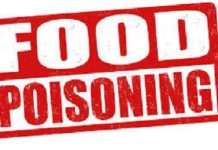There has been a seismic shift in the dietary landscape in recent years.Where once fat was the much maligned enemy, now scientists are turning their attention to sugar.There has been a seismic shift in the dietary landscape in recent years.
Where once fat was the much maligned enemy, now scientists are turning their attention to sugar.It is now widely accepted that more must be done to encourage people to reduce their sugar intake.

Eating too much sugar can lead to weight gain, which in turn increases the risk of health conditions such as heart disease and type 2 diabetes.Sugar causes a spike in blood sugar, which leads to the hormone insulin to be released to take glucose into the body’s cells.But insulin is a storage hormone, encouraging extra calories to be stored as fat.
In a recent study, a team at the University of New South Wales in Australia, also found sugar is ‘as damaging to the brain as extreme stress or abuse’.
The changes we observed to the region of the brain that controls emotional behaviour and cognitive function were more extensive than those caused by extreme early life stress.
The rest we add to tea, coffee and cereal, and other foods we cook.Sugary drinks account for the largest proportion of Australians' free sugar intake.
A single can or 600ml bottle of soft drink can easily exceed the WHO recommendation, providing around 40-70g sugar. One teaspoon equates to 4.5g white sugar, so soft drinks range from 8.5 to 15.5 teaspoons.
More insidious sources of sugar are drinks marketed as ‘healthier' options, such as iced teas, coconut water, juices and smoothies.
Some medium-sized smoothies have up to 14 teaspoons of sugar (63.5g) in a 475ml drink.
Flavoured milks are also high in free sugars (11 teaspoons in a 500ml carton) but can be a good source of calcium.Other foods high in sugar are breakfast cereals. While some sugar is derived from dried fruit, many popular granola mixes add various forms of sugar.
Sugar content for one cup of cereal ranges from 12.5g for creamy honey quick oats to 20.5g for granola.
A cup of some types of cereal can contain 30 per cent to 50 per cent of your daily free sugar allowance.A surprise for many is the added sugars in savoury foods including sauces and condiments.
Tomato and barbecue sauce, salad dressing and sweet'n'sour stirfry sauces contain one to two teaspoons of sugar in each tablespoon (20ml).
Popular ‘health foods' and sugar-free recipes can be particularly misleading as they can contain as much sugar as their sweet alternatives.
Usually this is referring to ‘sucrose-free' (what we know as white sugar) and doesn't exclude the use of other sugar derivatives such as rice malt syrup, agave or maple syrup, typical of popular sugar-free recipes.
These are still forms of sugar and contribute to energy intake and unhealthy weight gain when consumed in excess.
We know treats such as chocolate, pastries and ice-cream do contain sugar, but just how much might surprise you.
A chocolate-coated ice cream will contribute five teaspoons of sugar, or almost half the daily limit.
Sugar added to foods and drink can have different names depending on where it comes from. When reading labels, alternative names for sugar include:
sucrose
glucose
corn syrup
maltose
dextrose
raw sugar
cane sugar
malt extract
fruit juice concentrate
molasses
The main ingredient is sugar if any of these are listed as the first three ingredients.
Note that products with ‘no added sugar' nutrition claims may still contain high levels of natural sugars, also considered as free sugars.
A good example of this is fruit juice: the sugar content of 200ml of sweetened orange juice (21g) is 7g higher than unsweetened juice (14g).













